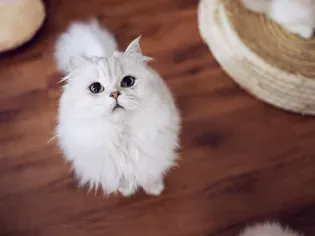When Do Cats Shed the Most?
Updated on 04/26/24

When Do Cats Shed the Most?
Cats are beautiful creatures that bring joy and companionship into our lives. However, one of the less glamorous aspects of cat ownership is dealing with shedding. While all cats shed to some extent, the amount and frequency of shedding can vary depending on several factors. Understanding when your cat sheds the most can help you prepare and minimize the impact of fur tumbleweeds in your home.
Seasonal Shedding: The Twice-Yearly Fur Frenzy
The most significant shedding periods for cats occur twice a year, in the spring and fall. These seasonal sheds are triggered by changes in daylight hours, which signal the body to adjust its fur coat for the changing seasons.
* Spring Shedding: As the days get longer in the spring, cats shed their thick winter coats to make way for a lighter summer coat. This shedding typically begins in March or April and can last for several weeks.
* Fall Shedding: When the days start getting shorter in the fall, cats begin to grow a thicker winter coat to prepare for the colder months. This shedding usually starts in September or October and can also last for several weeks.
Continuous Shedding: A Constant Fur-Ever Battle
In addition to the seasonal shedding, cats also shed continuously throughout the year. This ongoing shedding is usually less noticeable than the seasonal sheds but can still contribute to a furry mess around the house.
* Short-haired Cats: Short-haired cats generally shed less than long-haired cats but can still shed noticeable amounts, especially during seasonal changes.
* Long-haired Cats: Long-haired cats are known for their luxurious fur and, unfortunately, their heavy shedding. These cats require frequent brushing to minimize shedding and prevent matting.
Other Factors that Affect Shedding
While seasonal changes are the main triggers for shedding, other factors can also influence the amount and frequency of fur loss in cats.
* Age: Older cats tend to shed more than younger cats.
* Health: Certain health conditions, such as allergies, skin infections, and hormonal imbalances, can lead to excessive shedding.
* Stress: Stressful events, such as moving or a new pet in the household, can trigger increased shedding in cats.
* Breed: Some cat breeds, such as the Siberian and Norwegian Forest Cat, are known for their heavy shedding.
Managing Shedding: How to Keep the Fur Under Control
While it's impossible to completely prevent shedding, there are several things you can do to minimize the impact:
* Regular Brushing: Brush your cat regularly, especially during seasonal shedding periods. This will remove loose fur and prevent it from being shed around the house.
* Grooming Tools: Use a combination of grooming tools, such as a slicker brush, undercoat rake, and grooming glove, to effectively remove dead hair.
* Bathing: Bathing your cat every few months can help remove loose fur and reduce shedding.
* Healthy Diet: A healthy diet rich in essential nutrients can promote healthy skin and coat, reducing shedding.
* Address Health Issues: If your cat is experiencing excessive shedding, it's important to consult with your veterinarian to rule out any underlying health conditions.
Example Scenarios
To illustrate the different shedding patterns in cats, here are a few examples:
* Scenario 1: Your short-haired cat sheds noticeably every spring and fall, but the rest of the year, the shedding is minimal. This is an example of normal seasonal shedding.
* Scenario 2: Your long-haired cat sheds heavily all year round, with no significant difference in shedding during the spring and fall. This could be a sign of an underlying health condition or stress.
* Scenario 3: Your cat's shedding has suddenly increased, and you notice bald patches on its skin. This could indicate a skin infection or hormonal imbalance and requires veterinary attention.
Conclusion
Understanding when your cat sheds the most can help you prepare for furry season and minimize the impact of shedding in your home. By following the tips provided, you can effectively manage your cat's shedding, keeping your feline friend looking and feeling its best while maintaining a clean and fur-free living space. Remember, a well-groomed and healthy cat is a happy cat, and minimizing shedding is just one aspect of providing your furry companion with the care and attention they deserve.
Explore More Pets

Cat Behavior Problems
How to Stop Aggression in Kittens

Long-Haired Cat Breeds
Siberian Cat: Breed Profile, Characteristics, & Care

Cat Behavior Problems
How to Stop Kittens From Scratching and Biting

Long-Haired Cat Breeds
Turkish Angora: Cat Breed Profile, Characteristics & Care

Basic Training
How to Socialize Your Kitten

Short-Haired Cat Breeds
Cute Pictures & Facts About Calico Cats & Kittens

Litter Box Training
Training Your Kitten to Use the Litter Box

Long-Haired Cat Breeds
10 Fun Facts About White Cats